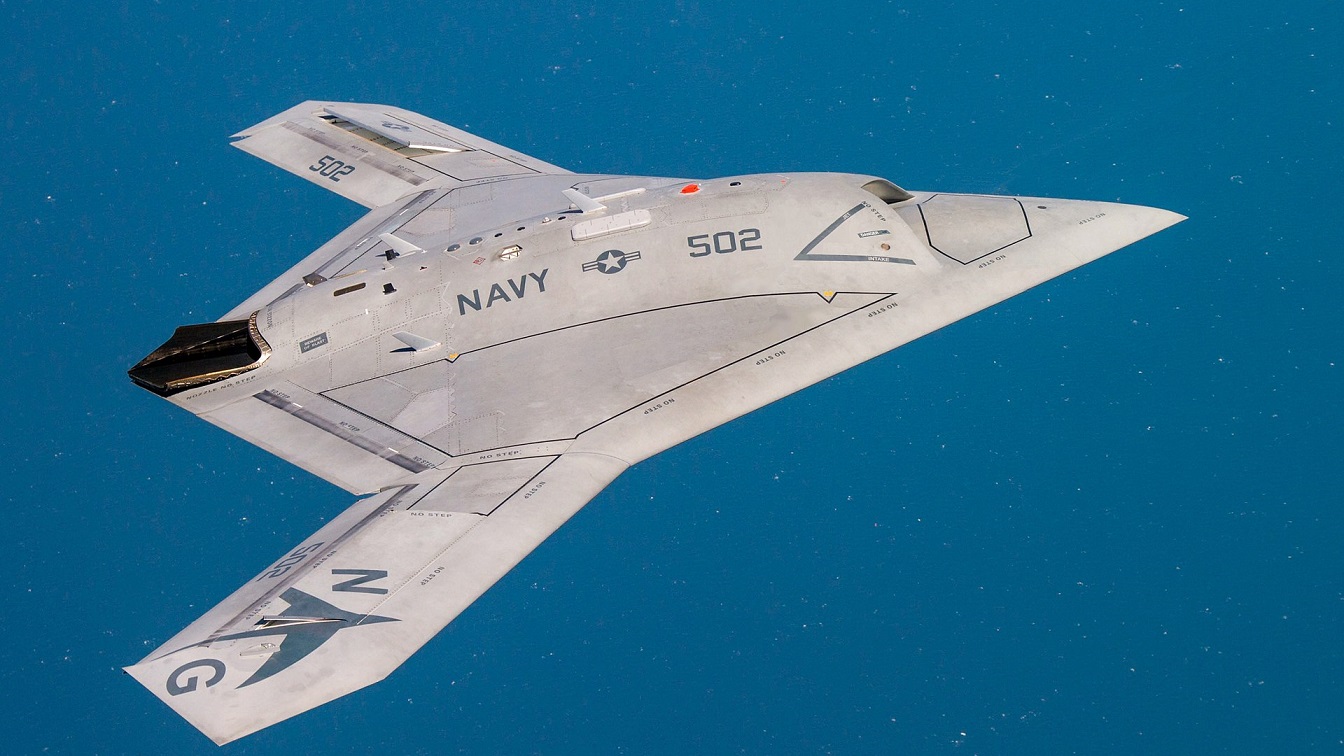The Nagorno-Karabakh conflict between Azerbaijan and Armenia and the ongoing Russian invasion of Ukraine have proved that drone use is the future of conventional warfare. Military unmanned aerial vehicles (UAVs) can serve a host of roles, including intelligence collection, surveillance and targeted strikes. Their application in counter-insurgency warfare and modern conflicts have incentivized militaries across the globe to invest heavily in their production and procurement, including the American aerospace and defense technology company Northrop Grumman. The X-47B tailless, strike fighter-sized UAV was designed as part of the U.S. Navy’s Unmanned Combat Air System (UCAS) Carrier Demonstration Program. After a decade of testing, the drones are now set to be delivered to aviation museums for display.
The concept driving the production of the X-47B did not arise until the early 2000’s, when the U.S. Navy awarded $2 million contracts to both Boeing and Northrop Grumman for a short-term concept-exploration program. The X-47B variant is largely based on its predecessor, the Pegasus X-47A, which was developed under a joint U.S. Air Force-U.S. Navy program called the Joint Unmanned Combat Air Systems (J-UCAS). The joint program aimed to demonstrate the technical feasibility, value and structure a new system of sophisticated UAVs would bring to both military branches. Eventually, the U.S. Air Force and U.S. Navy proceeded with their own UAV programs. The Navy chose Northrop Grumman’s X-47B as its UCAS program.
Testers from Northrop Grumman and the U.S. Navy carried out the first successful test of the X-47B demonstration aircraft in 2011 at Edwards Air Force Base in California. The drone was able to reach an altitude of 5,000 feet during the flight, in addition to flying various racetrack-type patterns and landing securely. Four years later, the U.S. Navy conducted its first autonomous aerial refueling test with the X-47B over the Chesapeake Bay in Maryland. According to USNI, the UAV “successfully maneuvered behind a contracted Omega Aerial Refueling Services Boeing 707 tanker and took on more than 4,000 pounds of fuel before heading back to Pax River at about 1:15 P.M. EST. The probe-and-drogue refueling test was successfully completed during the first of two test windows NAVAIR had on Wednesday and days before the availability of the Omega tanker was to expire, USNI News understands.”
Despite the X-47B’s successful tests and truly cutting-edge technological attributes, another UAV demonstrator has taken the stage. Boeing’s MQ-25 Stingray aerial refueling drone was a product of the Carrier-Based Aerial-Refueling System (CBARS) program, an offshoot of the J-UCAS. Under development since 2006, the carrier-based Stingray will start procurement next year, according to the U.S. Navy’s 2023 budget request. As the first UAV to ever launch and land on a Naval carrier, the Stingray is projected to double the attack range of its strike counterparts, including the F-35C Joint Strike Fighter and the F/A-18 Super Hornet. As detailed in the Warrior Maven, the Stingray’s “blended and rounded wing-body fuselage configuration and horizontal shape absent protruding vertical structures would certainly be much less vulnerable to detection by enemy radar. This means that not only can it reach at-sea locations much less accessible to land-launched refuelers, but it is also much more survivable than large, fixed-wing tanker aircraft likely to be extremely vulnerable to incoming enemy fire.”
These advanced attributes certainly make the Stingray the UAV demonstrator of choice amidst the looming Chinese threat over the Pacific. In early April, a video circulated depicting an unprecedented view of a Chinese bomber carrying a “carrier killer” air-launched anti-ship ballistic missile (ASBM). The weapon is comprised of a large rocket booster that is reportedly mated to a hypersonic missile. While the exact form of the terminal phase has not been confirmed, according to Naval News, Beijing does possess a hypersonic glide body with its DF-17 land based missile.
To combat The People’s Liberation Army’s (PLA) advancing arsenal of weapons, America’s UAV demonstrators are becoming increasingly vital. Although the two X-47B demonstrators are now destined to be displayed at museums, their ultimate integration in the U.S. Navy remains unclear.
Maya Carlin is a Middle East Defense Editor with 19FortyFive. She is also an analyst with the Center for Security Policy and a former Anna Sobol Levy Fellow at IDC Herzliya in Israel. She has bylines in many publications, including The National Interest, Jerusalem Post, and Times of Israel.

